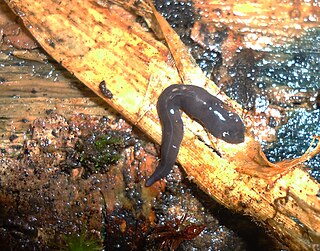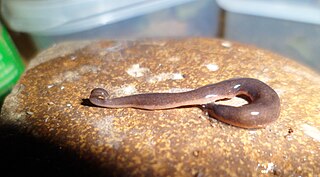
Obama is a genus of land planarians from South America. It contains several species adapted to human-disturbed environments, including the only invasive land planarian native to the Neotropical realm, Obama nungara, which has been accidentally introduced in Europe.

The reproductive system of planarians is broadly similar among different families, although the associated structures can vary in complexity.

Notogynaphallia is a genus of land planarians from South America.
Gigantea is a genus of land planarians from the Neotropical realm.
Cratera crioula is a species of land planarian belonging to the subfamily Geoplaninae. It is known from specimens found in Cantareira State Park, Brazil.
Cratera joia is a species of land planarian belonging to the subfamily Geoplaninae. It is known from specimens found in Serra do Mar State Park in Brazil.

Choeradoplana benyai is a species of land planarian belonging to the subfamily Geoplaninae. It is found in areas of Atlantic Forest within Rio Grande do Sul, Brazil, such as São Francisco de Paula.
Choeradoplana crassiphalla is a species of land planarian belonging to the subfamily Geoplaninae. It is known from specimens found in the Reserva de Vida Silvestre Urugua-í within the Urugua-í Provincial Park in Argentina.
Cratera hina is a species of land planarian belonging to the subfamily Geoplaninae. It is known from specimens found in the Paranapiacaba Conservation Units Mosaic in Brazil.
Cratera taxiarcha is a species of land planarian belonging to the subfamily Geoplaninae. It is known from specimens found in Albert Löfgren State Park and Cantareira State Park in Brazil.
Cratera arucuia is a species of land planarian belonging to the subfamily Geoplaninae. It is known from specimens found in Intervales State Park in Brazil.
Cratera assu is a species of land planarian belonging to the subfamily Geoplaninae. It is known from specimens found in Serra da Bocaina National Park in Brazil.
Cratera boja is a species of land planarian belonging to the subfamily Geoplaninae. It is known from specimens found in Serra da Bocaina National Park in Brazil.
Cratera tui is a species of land planarian belonging to the subfamily Geoplaninae. It is found in Serra da Bocaina National Park and Itatiaia National Park in Brazil.
Cratera imbiri is a species of land planarian belonging to the subfamily Geoplaninae. It is known from specimens found in Campos do Jordão State Park in Brazil.
Cratera paraitinga is a species of land planarian belonging to the subfamily Geoplaninae. It is known from specimens found in the Boracéia Biological Station in Brazil.
Geoplana ibiuna is a species of land planarian belonging to the subfamily Geoplaninae. It is found in areas of the Atlantic Forest within Ibiúna and Santana de Parnaíba, Brazil.

Issoca assanga is a species of land planarian belonging to the subfamily Geoplaninae. It is known from specimens found in Brazil.
Obama apiguara is a species of land planarian belonging to the subfamily Geoplaninae. It is found within Brazil.
Piima is a genus of land planarians belonging to the subfamily Geoplaninae. It is monotypic, containing the sole species Piima ata. It is found in Brazil.




